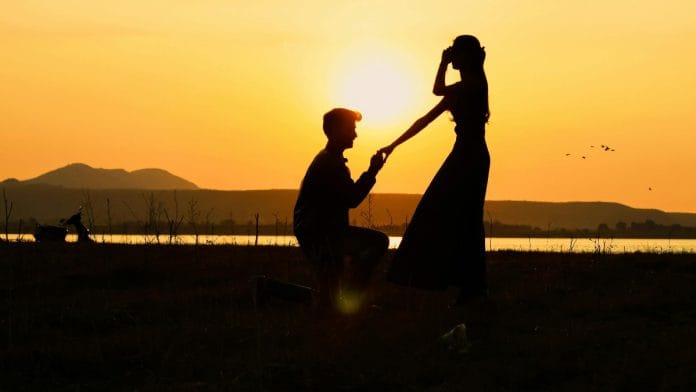Thank you dear subscribers, we are overwhelmed with your response.
Your Turn is a unique section from ThePrint featuring points of view from its subscribers. If you are a subscriber, have a point of view, please send it to us. If not, do subscribe here: https://theprint.in/subscribe/
Once in four years comes the leap year and along with it comes one common tradition where Feminism is celebrated and is believed to have originated in Ireland where women are “allowed” to propose to men for marriage and turn the tables around on 29th February which is also known as “Leap Day” is commonly practised Irish tradition which dates back to the Fifth century in Ireland when St. Bridget complained to St. Patrick explained why women had to wait too long for men to propose. St. Patrick supposedly decreed that on leap day, women could propose. At first it is believed that St.Patrick had offered women to be encouraged to propose on one day in every seven years, but somehow St.Bridget managed to convince him to declare it once in every four years.
It’s a playful tradition that has been carried on through the centuries. Even in pop culture this tradition has been referred to in the 2010 romantic comedy “Leap Year” starring Amy Adams and Matthew Goode, where Adams’ character travels all the way from Boston to Dublin to propose to her long time boyfriend in the midst of all the hassles. The tradition gained popularity and was established by the Nineteenth Century, and it was believed that any man who refused a woman’s proposal on Bachelor’s Day was obligated to give her a gift, such as a silk gown or money. This custom provided an opportunity for women to take the initiative in proposing marriage, challenging traditional gender roles.
Another Leap Day tradition in Ireland involves the belief that it is unlucky to get married or start a new job during a Leap Year, particularly on Leap Day itself. While this superstition may vary in significance among individuals, it adds to the folklore surrounding Leap Day in Ireland. Similar Leap Day traditions have been found in other cultures as well, especially in Scotland and in certain parts of Britain and Finland. Towards the end of the Nineteenth century the tradition had reached the American culture as well but was rather treated in a misogynistic manner.
One of the instances can be found back to the year 1860 when noted American poet Ralph Waldo Emerson had written that his daughter mentioned about “Leap year dance” where men are supposed to sit around and wait to be invited by women.The tradition went on to be known widely by the early Twentieth century where it became a matter of jokes and humour about unmarried women.
In American culture, Bachelor’s Day, also known as Sadie Hawkins Day, originated from a comic strip called “Li’l Abner” created by cartoonist Al Capp in the late 1930s. The concept was that on this day, typically observed on February 29th or the first Saturday in November, women could ask men out on dates or initiate dances, flipping traditional gender roles. It was a playful way to challenge societal norms and empower women to take the lead in romantic pursuits.
While the tradition of Bachelor’s Day proposing has become less common in modern times, it remains a part of Irish folklore and is occasionally celebrated in various forms, such as themed events or romantic gestures. Additionally, Leap Day weddings have become popular as couples embrace the uniqueness of getting married on a date that only occurs once every four years.
Over time, the tradition faded, but remnants of it can still be seen in informal events or themed parties and is still practised in Ireland and other countries.
These pieces are being published as they have been received – they have not been edited/fact-checked by ThePrint


